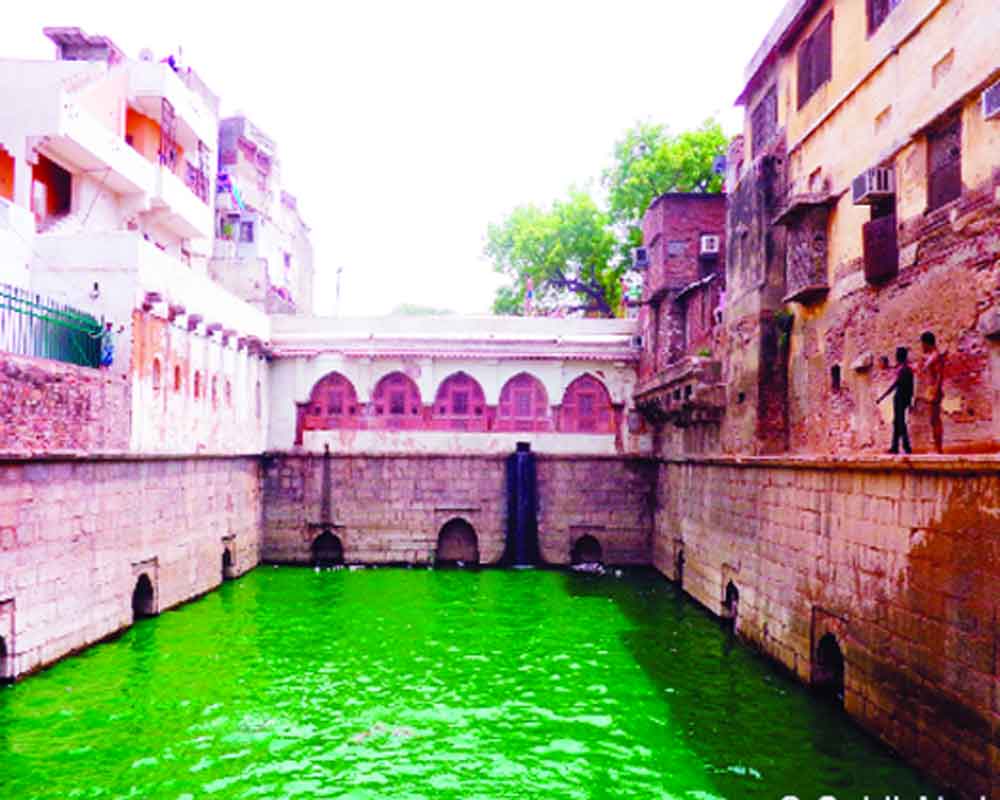Conservationists have been reviving local baolis and wells in NIZAMUDDIN FOR QUITE SOME TIME BUT IT is only now, with free-flowing water that has enriched gardens and vegetation, that the city has a reason to look forward to COOL summer evenings. By Chahak Mittal
A myth goes that an old hermit had once cursed a Mughal emperor by saying, Ya rahe gujar ya rahe usar. The curse implied that his dream fort and stepwells, on completion, would be either deserted or be peopled by the nomadic Gujjar tribe. History is evidence that the bit about the numerous baolis in the city holds true as they have been abandoned presumably due to lack of water. The capital, that once was home to more than 100 baolis or stepwells, now has only 11. But a small beginning has been made to restore at least some of them to their former pristine glory. And these are contributing to making summer evenings in the city cool and a pleasant outdoor pursuit.
One such is the 800-year-old Hazrat Nizamuddin baoli, the only one that has an active underground spring ensuring a continuous water supply. Its renewal is being done mainly by the Aga Khan Trust for Culture (AGTC) under the Nizamuddin Urban Renewal Initiative and the Archaeological Survey of India (ASI). The baoli still holds water and is considered sacred by the devotees of the native community. In 2008, the baoli suffered major damage when portions of its eastern wall collapsed, threatening the shelters and security of 18 families which occupied the southern terrace. This also posed a threat to the over 5,000 pilgrims who are regular visitors of the corridor at the Dargah.
Ratish Nanda, conservation architect and project director of AGTC, listed how the revamping and water revival project under the initiative has been worked out. He informed, “After the collapse, the team worked on removing 40-feet of accumulated ashlar stones which had fallen in the baoli and were buried in the sludge. A path was paved to re-open the water inlet points. The baoli was desilted to its original depth of over 80 feet below the ground level.” He added that the baoli continues to hold over three million litres of water today.
Talking about the neighbouring Humayun’s Tomb, he highlighted how around 20 wells were discovered during the process of its restoration, which were filled with filth and dust. That scum was about 40 feet! He said, “So, around 200 rainwater harvesting recharge pits were created at the tomb to ensure that every drop of rainwater is used to recharge the ground water aquifers and wells.”
The objective of the garden restoration project, he said, was to revitalise and revive the gardens and its pathways, water channels, pools and fountains as per the original design. He added, “This has necessitated the conservation, repair and rebuilding of the water channel system and the repair, extension and reactivation of the irrigation system to ensure that water flows naturally through the watercourses and fountains. It has also entailed the establishment of renewable water sources using rainwater harvesting to recharge groundwater and historic wells.”
The entrance zone of the neighbouring Sunder Nursery consists of a series of sunken gardens and enclosed spaces for flowerbeds for seasonals which bloom annually. These also function as rainwater harvesting pits, water from which runs off into a swimming pool-sized underground tank. This water is put to use throughout the year after the Delhi monsoon fills the tank up. “The shallow lakes created at the spot also serve as water reservoirs,” said he. The nursery is home to more than 20,000 saplings which were planted to impact the overall vegetation and cool down the surrounding temperature. Nanda added that it makes “the place six to seven degrees cooler than the peripheral areas of Delhi.”
Talking about the aftermath of the restoration, Asif Ali, the art and heritage expert who was closely associated with the project, pointed out that this has impacted the monuments economically as well. “Footfalls at the site have risen from 300 to 400 per day (when the entry fee was Rs 5 for Indians and Rs 100 for foreigners) to 3,000 to 4,000 per day today (the fee is Rs 40 for Indians and Rs 600 for foreigners). There is more of the local, ancient heritage that is available for the tourists to look at. Economically that means huge gains.”
Photo: Pankaj Kumar


























